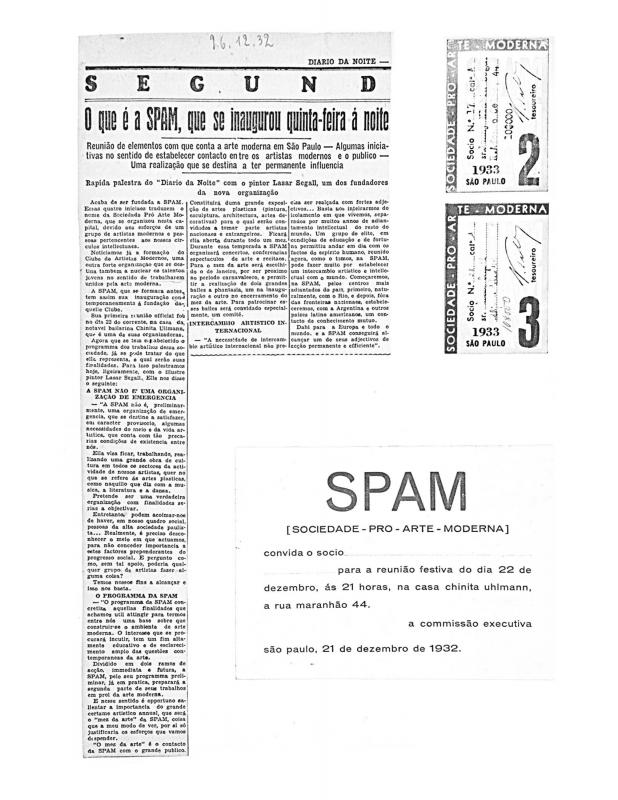In his lecture, which was organized by the American Contemporary Arts in São Paulo in 1944, the Brazilian poet and intellectual Oswald de Andrade (1890–1954) explains that the two main characters Jack de São Cristóvão and Carlos de Jaert?were based on the debates that took place in São Paulo a decade earlier, beginning in 1933. Other contributing factors were the founding of two organizations, the CAM (Clube dos Artistas Modernos) and the SPAM (Sociedade Pró-Arte Moderna), also in São Paulo. The author mentions the controversy that erupted following the lecture given by the Mexican muralist David Alfaro Siqueiros at the CAM in 1934. According to Andrade, there was radical disagreement among Brazilian modernists regarding the purpose and goal of art, whether works were of the “aestheticist” persuasion (aligned with abstraction and Surrealism) or with a social or political message.
Oswald de Andrade saw this rupture as “an aesthetic revolution that preceded the social revolution,” which, in the context of the Second World War, signified a Soviet victory over the Nazi war machine. This therefore, in one fell swoop, made bedfellows of the French avant-garde, Mexican muralists, and painters in the USSR, encouraged by “the fundamentals of future constructive art.” In de Andrade’s opinion, Brazil’s contributions to that phenomenon (which he called “a new Renaissance”) are visible in Tarsila do Amaral’s works from her Pau-Brasil period and, from the other perspective, in “the majestic nature of the fresco concept conveyed in Lasar Segall’s paintings.” Making an impassioned plea for continent-wide integration (delivered against the backdrop of the American Contemporary Arts, the host institution), Oswald calls on Latin American writers and artists to stand together in the fight for freedom as true representatives of democracy in the battle against fascism.
[Regarding the CAM, see the article by Flávio Carvalho in the ICAA digital archive: “Recordação do Clube dos Artistas Modernos” (doc. no. 781340).
With regard to the project promoted by the Sociedade Pró-Arte Moderna de São Paulo (SPAM, 1934), see the articles of incorporation written by Mário de Andrade (doc. no 783393); the articles by Lasar Segall, “O que é a SPAM, que se inaugurou quinta-feira à noite” (doc. no. 783486), and “SPAM (Sociedade Pró-Arte Moderna)—Manifesto” (doc. no. 783455); and by Paulo Mendes “Rapida noticia sobre a SPAM” (doc. no. 781313).
On the subject of the Pau-Brasil movement, see the following article by Tarsila do Amaral: “Pintura Pau-Brasil e antropofagia” (doc. no. 784978)].






